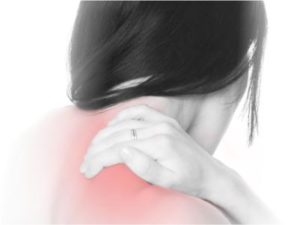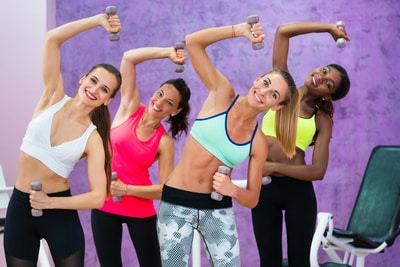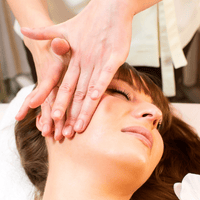,6 minute read
Don’t let your Sports-bra Ruin your Get Fit Plans
Choosing the right sports bra can be a tricky task. However, if you understand how it can cause neck and shoulder pain you will know what to look out for. In this blog I explain how some sports bras cause to hurt the neck and shoulder, and then give you some valuable tips on choosing the right sports bra as well as the best way to wear it.
The most important thing in a sports bra is coverage and support. You need full bust support and you need maximum comfort levels. This is where the conflict can start, as one works against the other. The over-riding principle is to choose one of support first. Correctly supporting sports bar is less likely to be an ill-fitting one. However too much support in a sports bra can push the breasts from out of their natural position, making them very uncomfortable over time. Overly tight straps around the neck and clasp positions can also cause further irritation.
How A Sports Bra Can Cause Neck Pain

The Neck
If you're wearing a sports bra that's too tight at the neck, you're at risk of developing neck and shoulder pain. The pressure can restrict blood flow, compress muscles, joints or even the nerves.
Neck Muscles
If some of the muscles are trapped under the tight bra strap, it may affect the normal functioning of muscles. This may have knock-on effects, causing strain. For example, some of the muscles at the base of the skull are inserted into the base of the neck. Compression at the base of the neck can cause a headache.
Equally, a tight band around the chest can prevent the free movement of ribs. This may make it harder to catch your breath, especially a deep breath in full-on aerobic activity where the diaphragm and ribs have to work togther. Similarly a tight fitting sports bra could be the cause of scuffing and chaffing of the skin.
Spinal Nerves
There are nerves that exit the spine at the base of the neck which can get pinched. In my many years of clinical practice I have seen ladies with heavy busts using normal ‘fashionable’ bras (ie not even sports bras) that have skinny straps. Under each shoulder strap I have observed a deep, visible furrow.
One of the most important group of nerves live at this level, collectively known as the brachial plexus. Pressure on this nerve group can refer pain into the shoulder, behind the shoulder blade and also, of course, down the arm.
The Spinal Joints
Again if the sports bra is too tight, the weight of the bust will in larger part be deferred, more across the shoulder area, than spread evenly between the chest-band and the shoulder. Contrary to popular belief the shoulder straps should sit on the shoulders, however typically they sit very close to the neck. This effect is heightened when the arms are raised upward and the straps slide even further downward onto the neck.
Every spinal vertebra in the body has wings that come out of the side of the neck, rather like ‘Frankenstein’s bolts’. If a tight strap makes contact with this it can directly transfer a force into the spinal vertebra and joint.
The spinal joints at the level of the neck are not designed to take the lion’s share of the load of the bust or accept direct pressure from the strap.
How to avoid neck and shoulder pain caused by sports bra?
Step 1: Choosing The Right Bra
 Bras come in to 3 main types: compression, encapsulation, and encapsulation-compression. As the names suggest encapsulation holds your breast firmly, compression squeezes the breast to afford more stability and the last is a combination of the two. If you have difficulty choosing the right one for you, we suggest you consider buying different sports bras, ie one for each activity ie one where you need more support say when running and another lighter one where you are moving and stretching more, ie for mat-work.
Bras come in to 3 main types: compression, encapsulation, and encapsulation-compression. As the names suggest encapsulation holds your breast firmly, compression squeezes the breast to afford more stability and the last is a combination of the two. If you have difficulty choosing the right one for you, we suggest you consider buying different sports bras, ie one for each activity ie one where you need more support say when running and another lighter one where you are moving and stretching more, ie for mat-work.
When choosing the right size sports bra, we generally recommended you measure under the bust, around the chest, and add on up to extra 2cm or so. This is to allow for chest expansion and movement, which will help prevent chaffing.
Step 2: Minimise Pain
Once you have decided on the type of bra and the activity you are going to use it for, you may be interested to know what is happening under the radar to your body.
The Shoulder Strap
Try to choose a sports bra where the straps are as far away from the neck. Ideally a wide strap and near to the collar bone. The wider strap dissipates the load over a wider area and keeping the strap toward the ball and socket area provides better bracing.

Examples of what to avoid – straps too close to neck
Adjustable straps may help, but bear in mind clasps can irritate the skin, dig in and also slip. Unless really needed, try and avoid clasps, specially the clasps that crossover at the back of the neck.
When lifting the arms above the head, a strap can slip toward the neck – so test this out before buying, specially if you are buying for mat work. If the strap slips toward the neck, aside of upsetting the nerves, it can also hurt the spinal joints and the muscles & ligaments around this area. This can lead to inflammation, swelling and pain. Symptoms can travel upward into the neck and head, ie headaches, or downward in to the shoulder and arm, causing arm pain, pins and needles etc.
These symptoms may not always arise during the exercise. It can arise several hours after. This is because it takes time for inflammation to build up.
It is important also to consider that the sports bra may not be the cause of your neck pain, shoulder pain, or headaches, but may be a trigger for them. If you are already suffering from pain, you may notice the pain gets worse after exercising. So it may not be the exercise alone, it may be the combination of the exercise with the sports bra
Band Compression
The band that goes around your chest is very important too, along with cup support. The band is the primary part of the sports bra that supports the weight of the breast. Underwired can provide more support, and is usually a personal preference. It must sit against the rib, not against any of the breast tissue. If the band is too tight (ie small), it can chaff the skin causing soreness and even affect breathing. If you see wrinkles in the material it is a sign the sports-bra is too big. If the bands slides up and down when you move your arms, again, it may be too big for you.
If you have a heavy bust it is worth looking a sports bra that has a firm band. This will help distribute the load evenly. It may be worth considering the material the band is made from. The band should not ride up or down when you move your arms, as that could lead to pain.
Bra Cup
The sports bra cup should cover all of the breast tissue, ie near the armpit and the tissue at the top of the breast. The cup should also compress the breast against the ribs. There should be no breast tissue leaking out near the armpit or at the top of the bra, this might mean the cup is too small. If there are wrinkles in the sports-bra cup, it's a sign the bra is too big.
Check out how the sports bra fits by jumping up and down, running on the spot, swing your arms up and down and above your head. If buying for mat work like yoga – stretch your arms out as far as possible to see if the straps ride into the neck. Make sure you do not notice any sore points, rubbing points, pressure points etc.
Worn out Fabric
Like any fabric that takes a pounding, the fabric can stretch, lose shape or lose it’s ability to give support. Manufacturers usually recommend washing on cooler wash without fabric softener and use a shorter wash cycle avoiding too much agitation on the fabric. Let it air dry. Technical fibres can get out of shape quite easily.
Need Some Help?
If you do experience neck and shoulder pain from your sports bra, we hope this blog post has helped you find some solutions that will help you avoid that pain. We know how important it is to stay active and fit, and we want you to continue to do that without experiencing any unnecessary pain! If you have additional questions or concerns with your sports bra or are looking for solutions for another problem, please feel free to drop me an email at anytime vispi@lccosteo.com
If you need a checkup or a treatment why not drop in and see us. Check out our Osteopathy page here https://www.livingcentreclinic.com/osteopath-wimbledon/
Thank you for reading, we are always excited when one of our posts is able to provide useful information on a topic like this!

Ask me your question
Fill in a form click here
Email me click here
Fill in form opposite to receive articles just like this when they are published.
– fill in the optional section to get discounts / offers on our treatments.
Vispi Jamooji DO PG Cert SPOP
Registered Osteopath (London, 1986)
Specialist Paediatric Osteopath & Cranial Osteopath
Living Centre Clinic
32 Durham Road, Raynes Park, London SW20 0TW
better@livingcentreclinic.com
020 8946 2331











